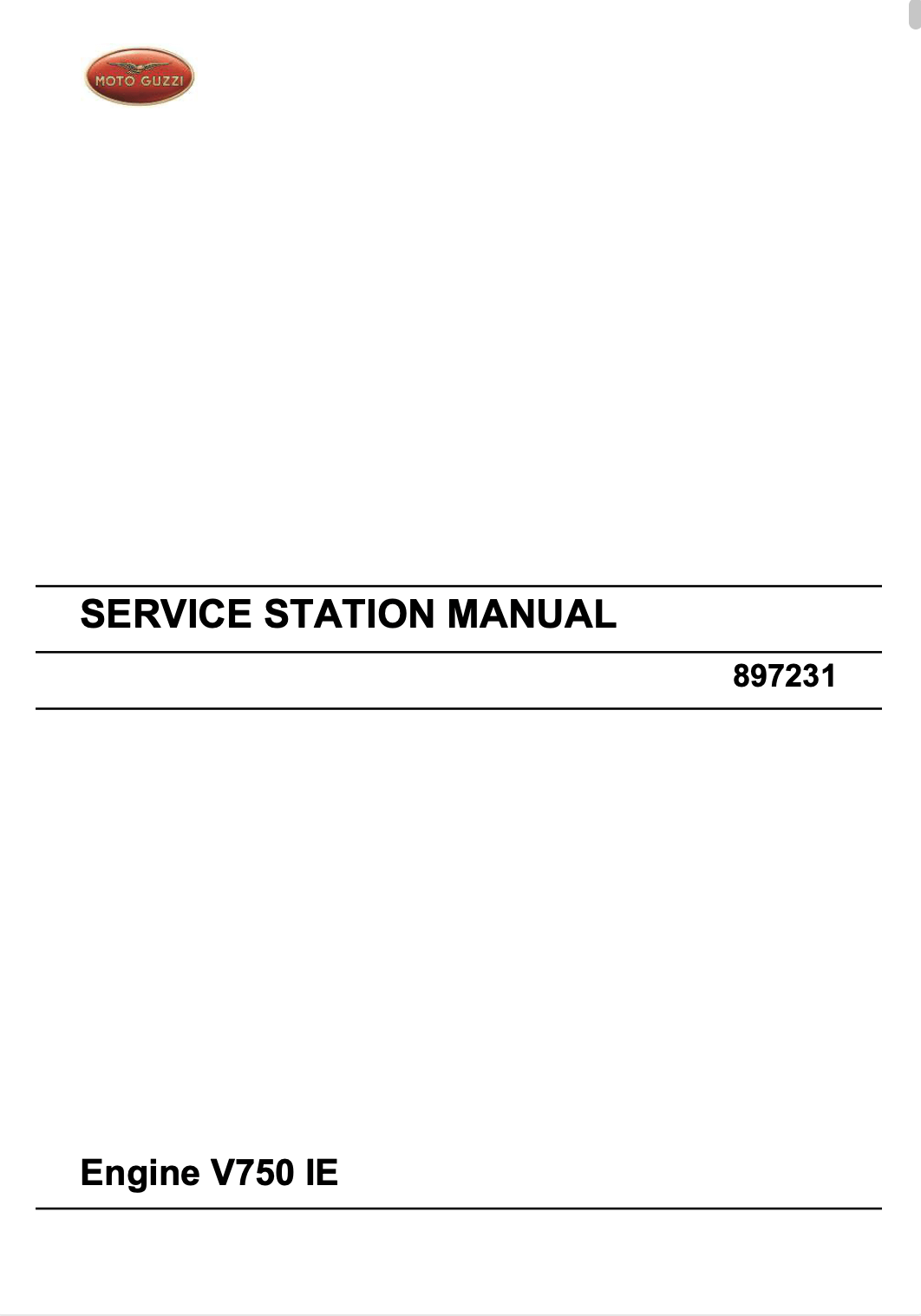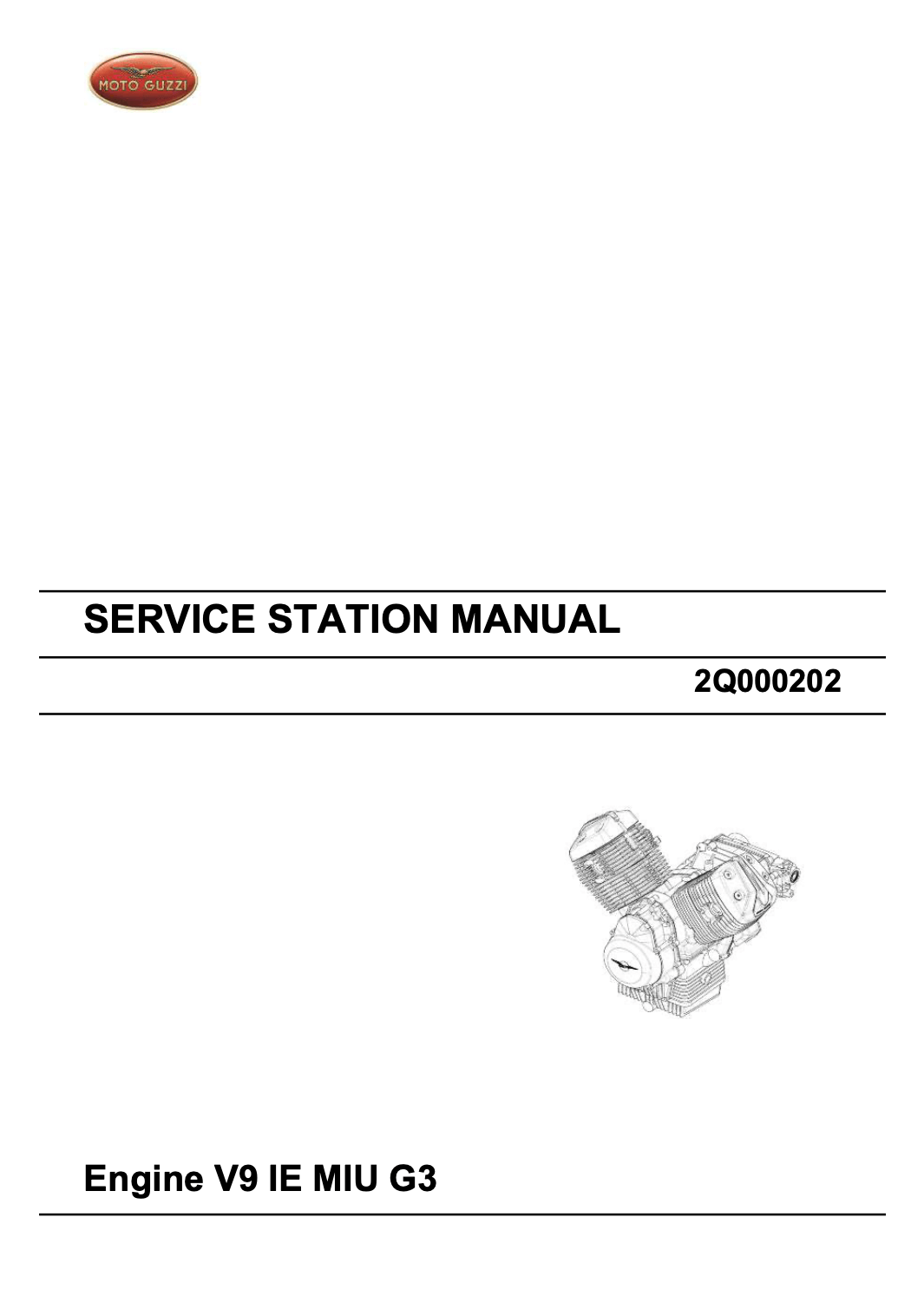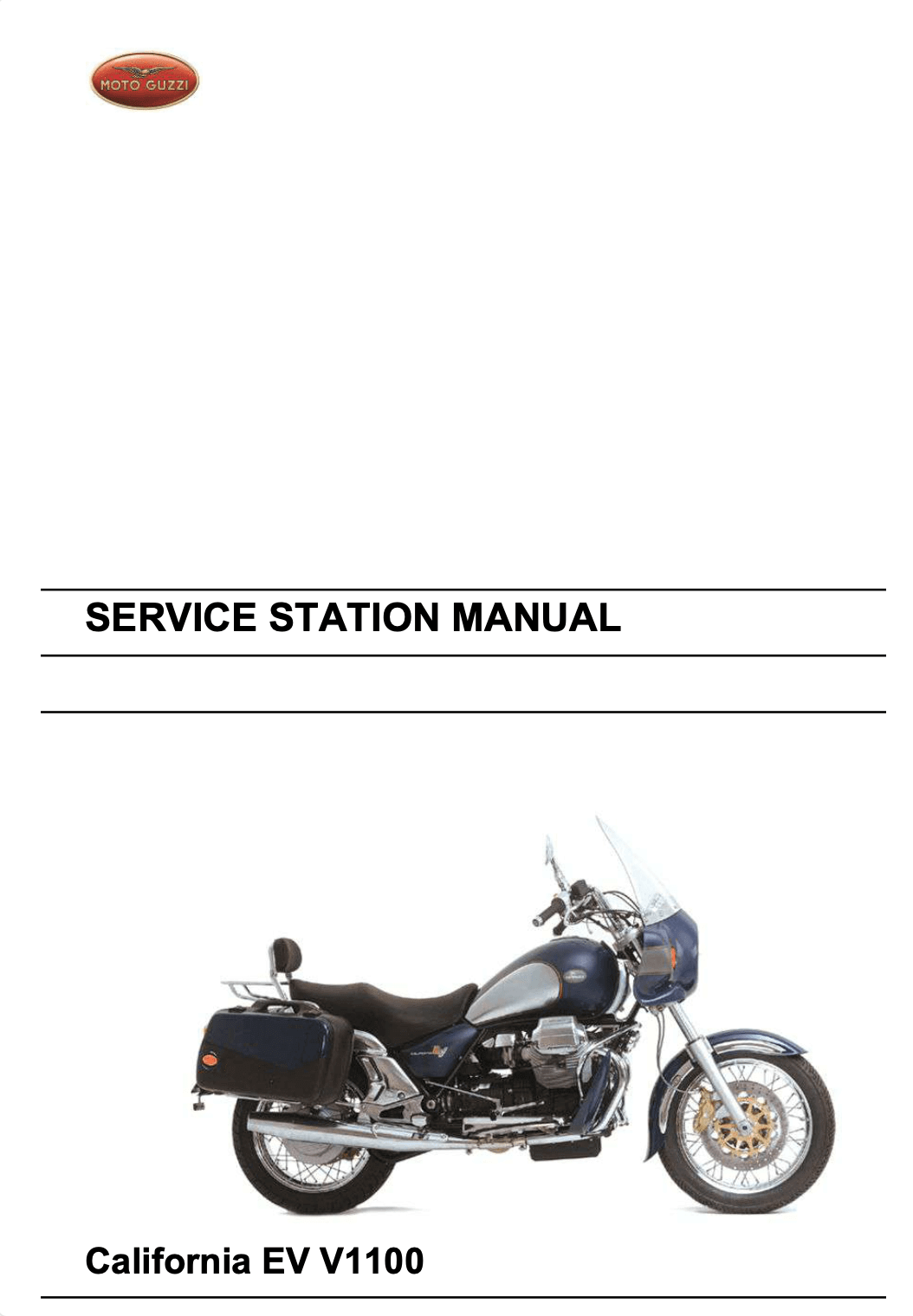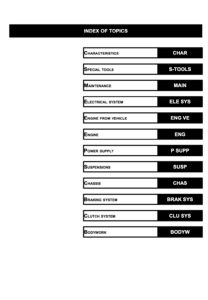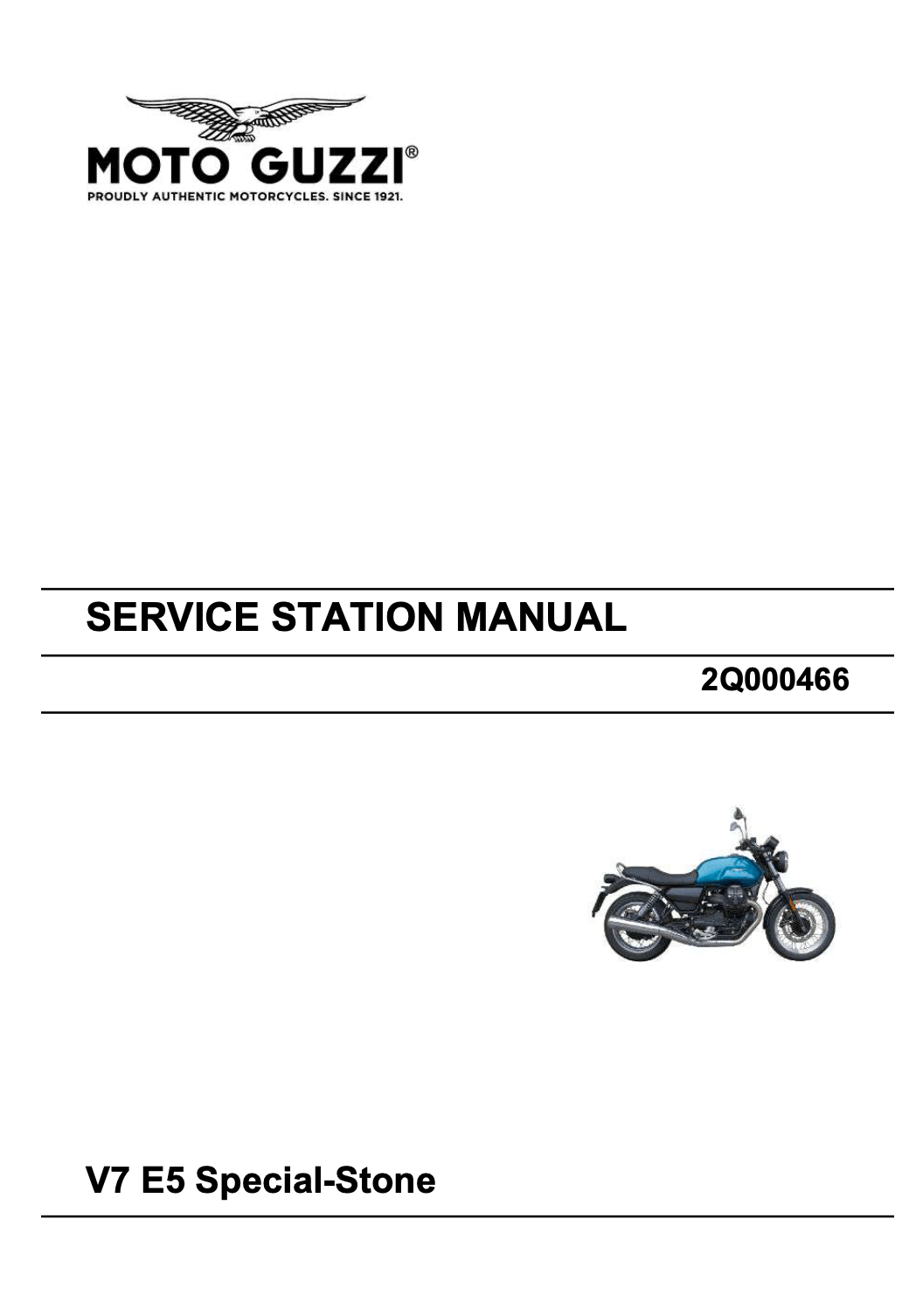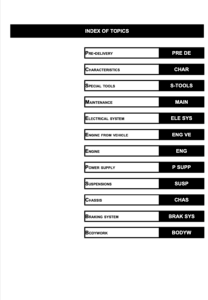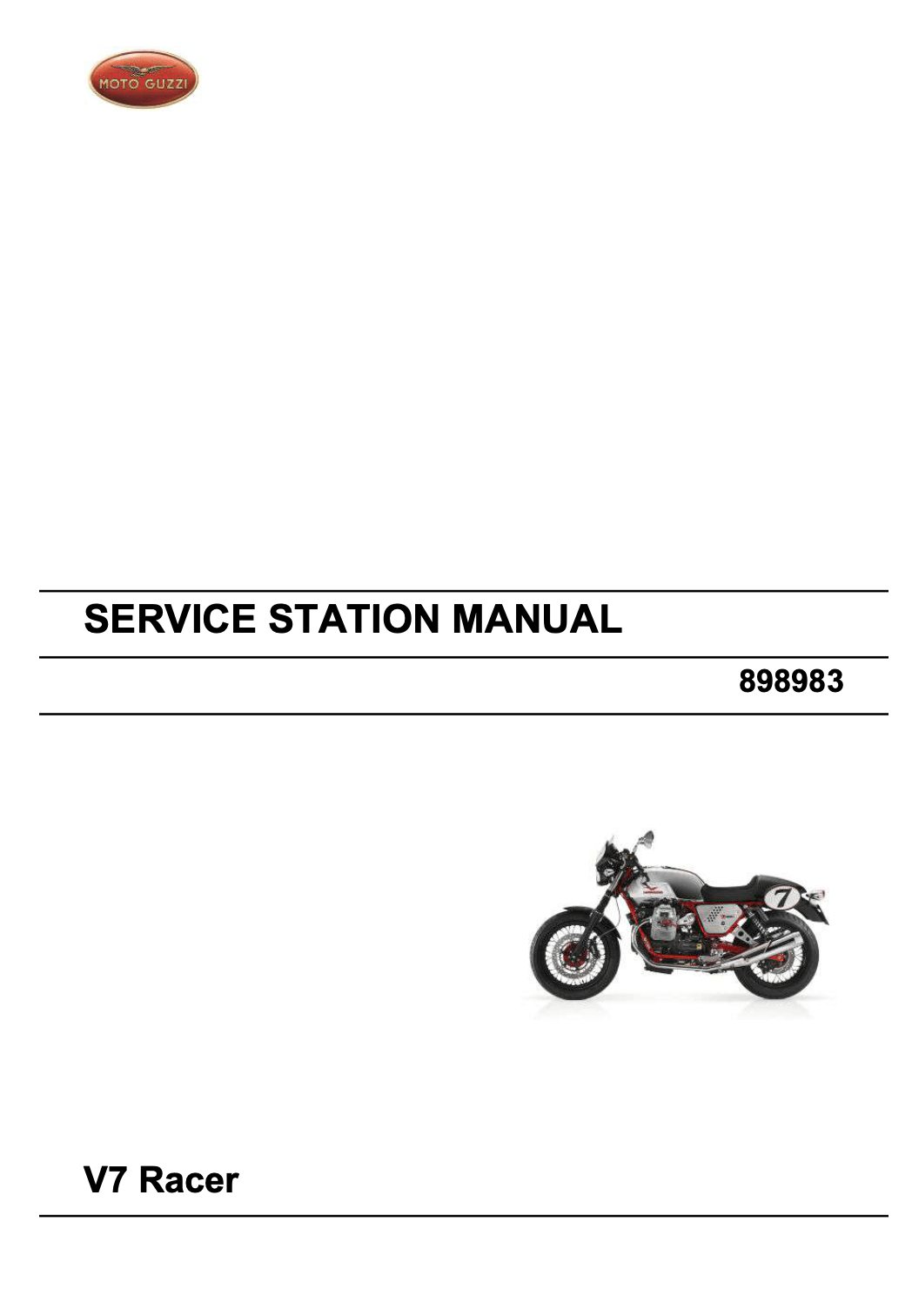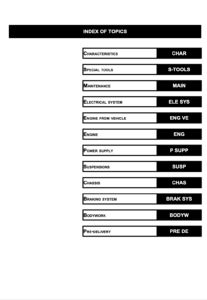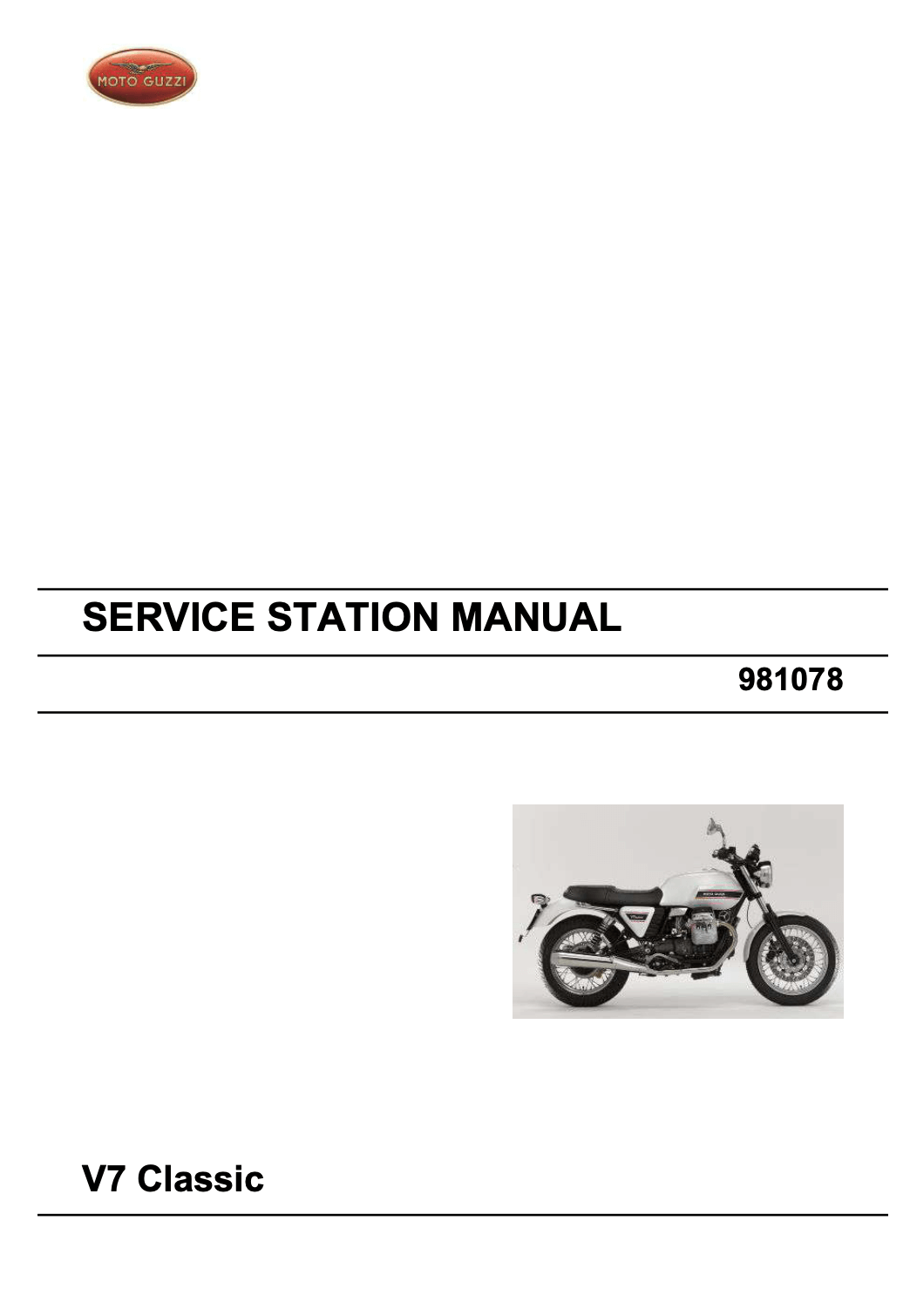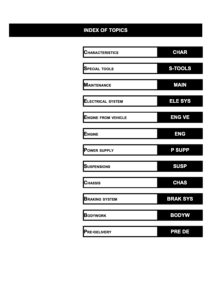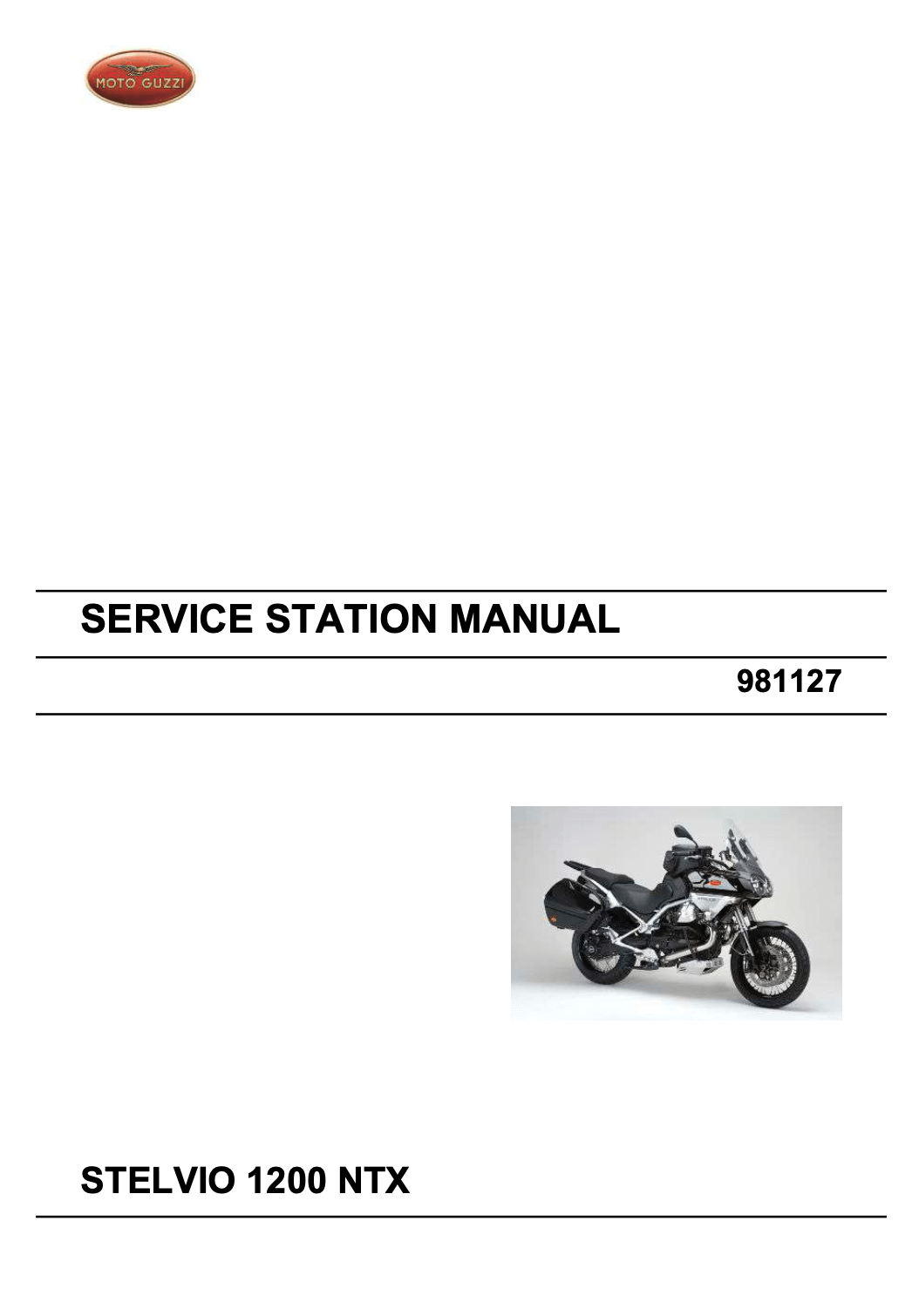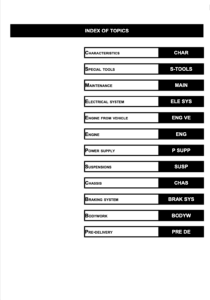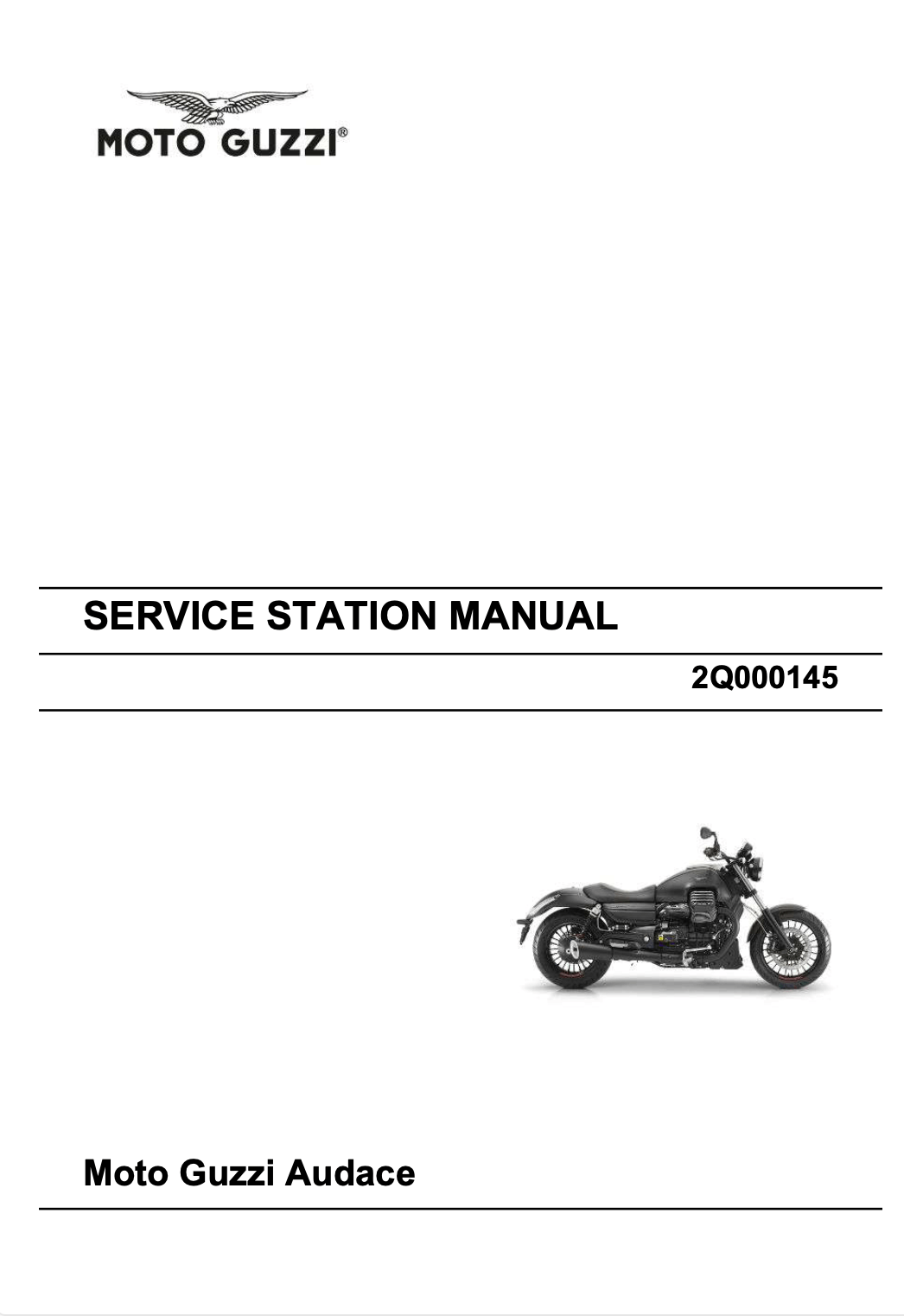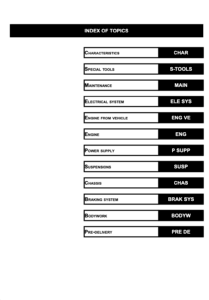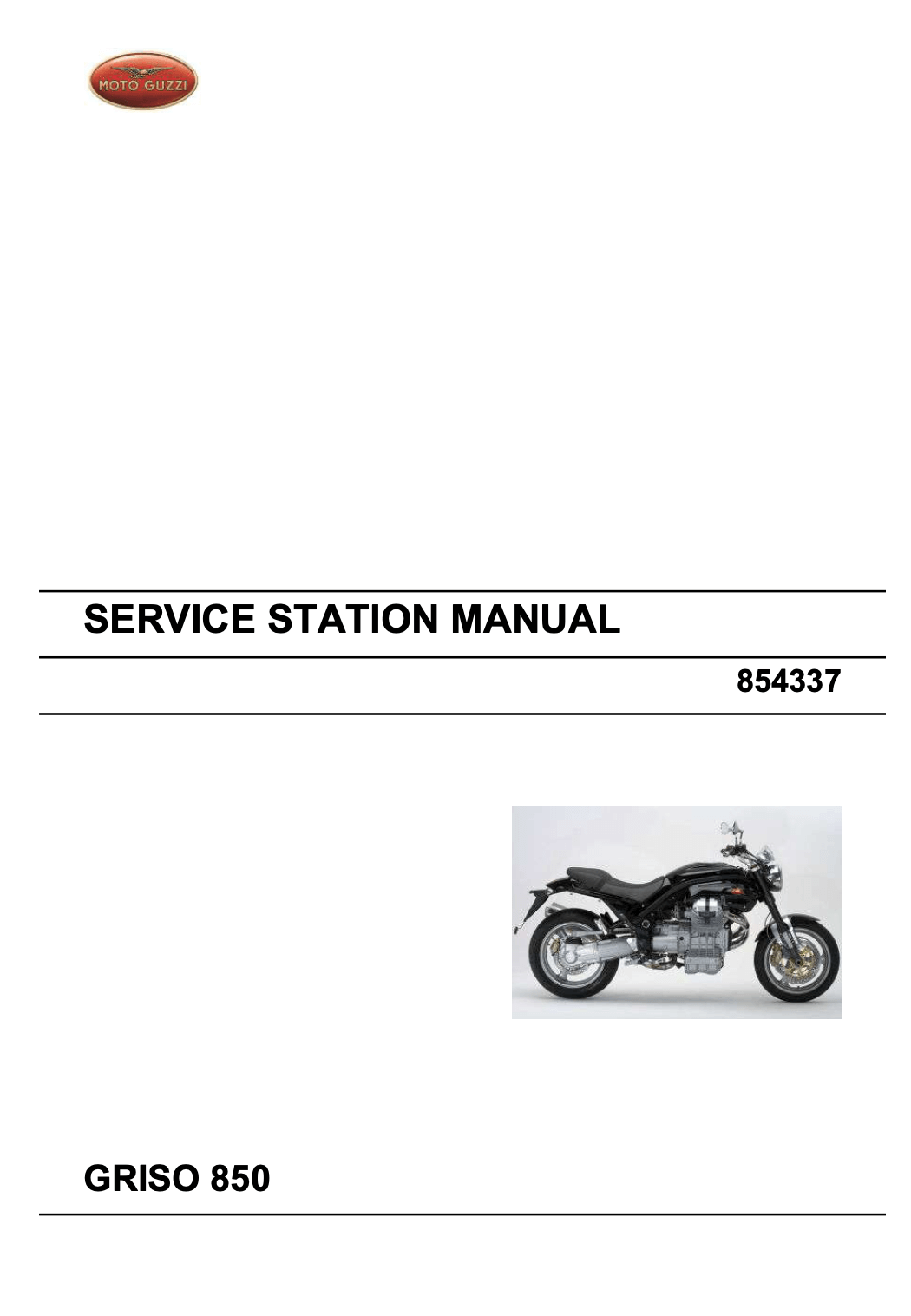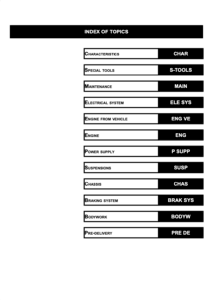Complete PDF version of the Service Manual for the Moto Guzzi Engine V750 IE. A MUST for every Moto Guzzi owner.
This manual of f0r the ENGINE only.
Download: Immediately after payment!
OEM Original factory workshop manual.
Models covered by this manual: all V750 i.e.
Number of pages: 117 pages
Table of contents:

This PDF repair manual can be downloaded right after the payment process in complete, on the device of your choice. You will also receive the download link by email along with your receipt.
We do not offer printed manuals, for the following reasons:
- it is more eco-friendly to use a digital version
- your manual never gets dirty or greasy
- you can always choose to print the specific page(s) you need to work on your bike
- you receive your manual immediately after payment
- it is searchable

Moto Guzzi Engine V750 IE
The original engine design goes back to 1977, the year the Moto Guzzi 50 made its successful debut.
Since then, the engine has been regularly upgraded, sustaining displacements ranging from 350 to 750 cc, transitioning from carburetor to electronic injection, but remaining true to the charming arrangement given by engineer Lino Tonti in the initial design. After many years of being praised for its legendary dependability and functional regularity, the small block required a touch more liveliness at high rpms.
As a result, the pursuit of better performance led to a new design, rich in inventive solutions that place this engine among the most sophisticated in its category, with more than 70% new parts, equivalent to more than 200 new or revised mechanical components.
This design freshness is clearly seen in the layout of the thermal group, which is a summation of the whole design philosophy: innovation while respecting history. As a result, the square finning, a vestige of 1980s manufacture, has handed the baton to a rounded form evocative of Mandello’s initial generation of two cylinders.
The valve cover pays attention to the V7’s roots as well; constructed of aluminum, it faithfully covers the profile of the finning while displaying the Moto Guzzi trademark in bas-relief. Another distinguishing feature is the absence of the two intake manifolds and related throttle bodies: the new tiny block is the first single throttle Guzzi engine.
The manifolds were replaced with a single rubber Y manifold that is totally ribbed and straight (diameters of 36 and 39 mm from the injector groups and the throttle body, respectively) and connects to a single Magneti Marelli MIU3G 38 mm diameter throttle body.
This is a contemporary device that allows two lambda probes to be handled, resulting in a more uniform mixture to the cylinders, which improves fuel efficiency and hazardous emissions while still contributing to the overall design’s aim of increased performance. A new head was designed for this purpose, focusing on the intake ducts, which were increased in diameter and better linked to reduce losses and increase turbulence, as well as relocating the spark plug hole more centrally due to the use of a more modern plug with d=10mm threading and a prominent electrode.
The squish area and compression ratio have also been raised as a result of the introduction of new, better performance pistons, which boosted the ratio by one point, from 9.2 to 10.2. In addition to the pouches acquired at the top of the piston, the bottom of these have been fully modified to strengthen the construction without adding weight. The segments are also new, with more modern sizes, materials, and forms that help to improve efficiency and reduce oil use.
The engine’s overall efficiency is due to the new cylinder finning, larger dimensions and wheelbase, which reduced average operating temperatures, and the new filter housing, which was developed to fit the “breathing” demands of the two cylinder from Mandello.
With this new arrangement, Mandello’s two-cylinder engine became much more robust in engine torque and, more importantly, maximum power, increasing 12 percent with higher inclination for bursts and a power curve that displays its extra horsepower as early as 3500 rpm.
The transmission has also been updated; it still has five gears but now has a new pre-selector that makes control more accurate, smooth, and quiet.
Source: Total Motorcycle

